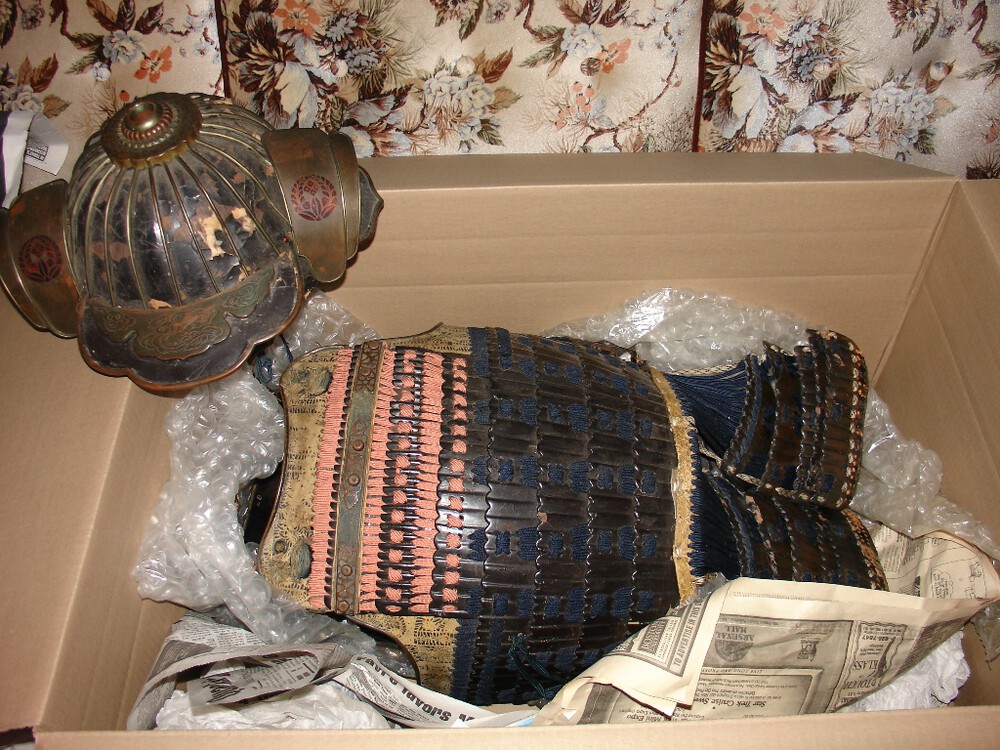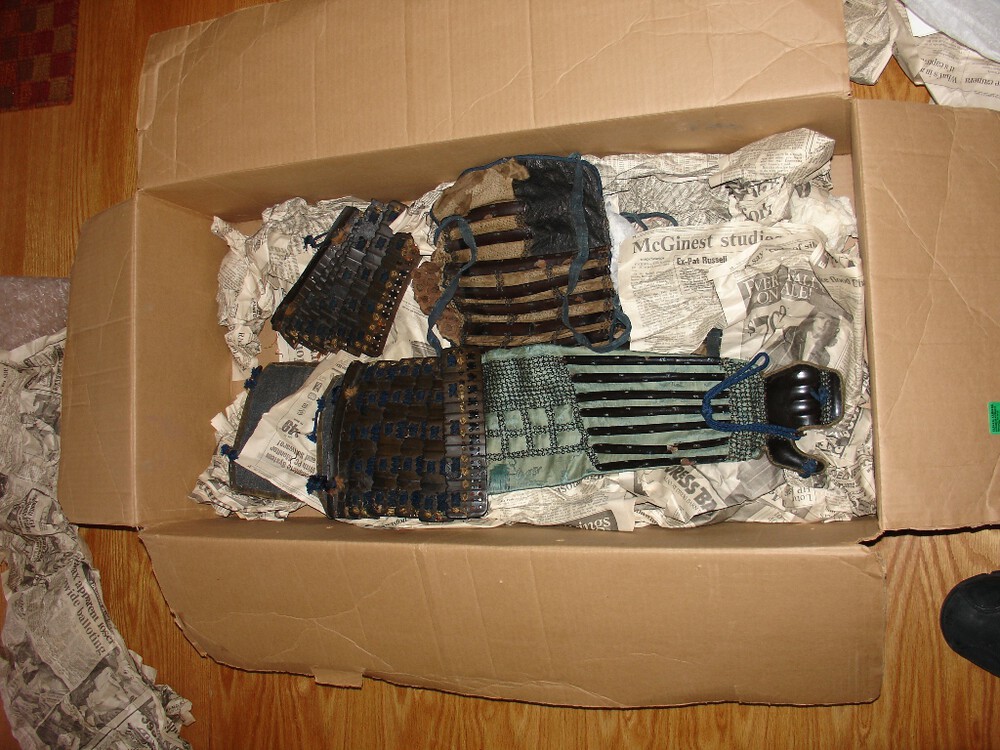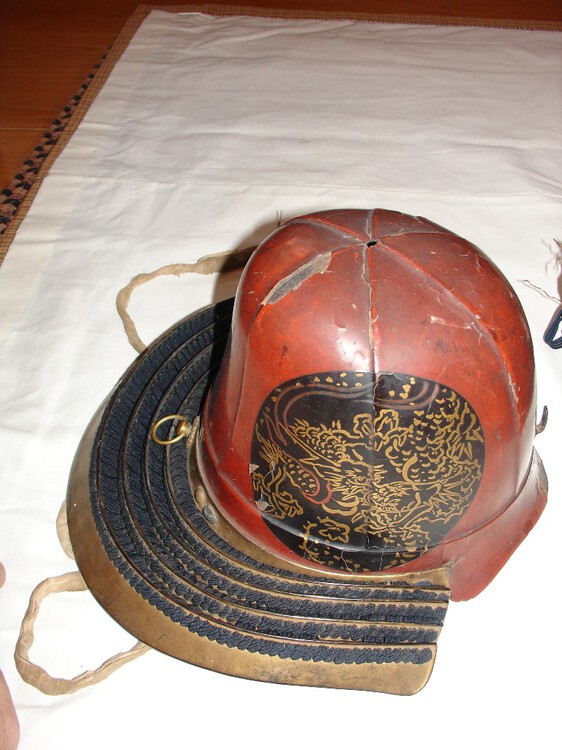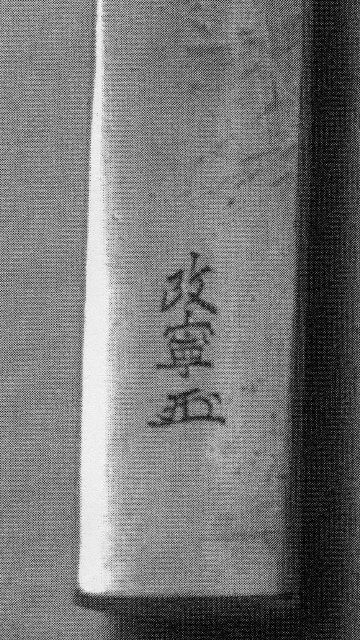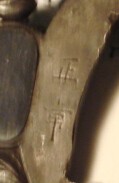-
Posts
334 -
Joined
-
Last visited
Content Type
Profiles
Forums
Events
Store
Downloads
Gallery
Everything posted by edzo
-
Dear Jim P, Just a thought, (and i'm new to this), You may want to explore the "somin or somin school" regarding the copper shishi fittings that u posted. I have one and encounterd a kantei point (with photo), on a websearch that pointed out that the round swirl-fur tufts were an indication of that. respectfully,
-
Dear Dr, Brian, I understand he returned home. I was invited to an afternoon get-together at a local residence. This was on 11/12/11, after his AM schedule with the MFA. My friend was hosting Ogawa san in his home between his appointments. J suggested that i bring a few pieces and expect to meet Ogawa San. Great experience in a relaxed social setting! He is impressive, just watching him examine and confidently identifying/defining a number of items so expiditiously! The two sets were posted as collateral for a loan 20 years ago that was never paid off. I understand that they were brought to this country by the East India Trading Co. in 1842. Respectfully,
-
Dear Ian Bottomly, Thank you for your response and generousity. I didn't want to unpack the entire suits. They have chain-mail in some cases inside the fabric. Inadvertently, i had the red suit with me and ran into Morihito Ogawa a few days ago. He examined and advised me that the suit (red including the kabuto), was early 18th century and that several of the components were related, meaning made together. Most of the lacquered pieces are iron and lacqured but in some cases they are lacqured hide/leather. He also mentioned that some of the oroshi had been redone in recent years. I wondered if they were a parade product or battle suits and or an abandoned retoration project. Most of the fabric appears original and matching. I have not had much success researching the suits on the internet. If you are willing to pas on your apparent knowledge i would be more than happy to post some details and all the components of each assembled suit. The dark helmet includes a leather skull cap in it and silver fukurin with copper and brass fittings. Respectfully,
-
Dear Bugyotsuji, Given the shape of the seppa dai on that side i would sumit it was removed to make room for a kogai hitsu ana. Respectfully, ed F Edited: Make room for a Kozuka.
-
Hi all, Can anyone give me any information or thoughts on the armor photos below. Are they parade etc? I am confident that thay are 18th century and some years ago some of the the oroshi was replaced, obviously a delyed restoration. Any assistance or direction would be helpfull. Respectfully, Ed
-
Greetings members and thanks for the input, Dear Mr Stiles and Boris, I am excited that you have taken the time to share your thoughts. I am not confused regarding the Q86 tsuba that I posted and am comfortable with what it is. To clarify my comfort zone with the tsuba in question, Q86, my conclusions are concurrent with those of Mr. Stiles. Regarding my mention of the Goto, that was for information purposes only because it surfaced in my research. I am familiar with the “masterpiece achievements” of Goto and the unparalleled quality/skill that set them apart from others. My intent was to share these perspectives with others that are learning, (objective and stimulating thinking), as well as, in the event these links have not been encountered before for whatever reason, but at least the study. Had I not encountered this reference in three different unrelated sources I would have been reluctant to post it. Respectfully Ed F.
-
Dear Mr. Shiller, I am familiar with your name from articles that i have read (likely you), and look forward to more informative commentary. I am young at this interest and am learning. The Goto reference first came to me from the 12/17/92 Christies NY catalog of the Dr. Walter Compton Sale. It appears on page 30 item #67 together with an image while researching the Q86 image posted in this thread. In addition I encountered this on a web site displaying a respected collection, and source that compelled me to post the example and quotation. Apparently, there are strong convictions on this. In this thread I posted the work that i have and clearly the designs are punched or stamped. The two sites i encountered the reference i made included images but not having the pieces in hand for enhanced magnification and scrutiny left me to a logical visual observation and best opinion together with the descriptions. I am not qualified to take a position in contrast to your post -carved vs stamped (that i sincerely appreciate), it was an effort to share something i felt worthy of mentioning on the topic. I am very grateful and appreciative for your post and visit. I will continue my research with regard to your point in an effort to build a reliable knowledge base. Respectfully, Ed F
-
Dear Rich, Thank you for your time and response. I was hanging somewhat on that tsuba which i like very much. I do not know as much as the members assisting me and they have been outstanding pointing me in a productive direction or put me on track. Absent of another direction for me on this your suggestion will follow, It make sense in my mind. Thank you very much, Ed F
-
Dear Morita and Mr. Bowen, Thanks again for your assistance. I had a difficult time with the characters because, at least to me, they were a variant i had not seen, (though i did consider yasu) before. I will be certain to add them to my database, Thanks, Ed
-
Greetings members, I'm not sure if should ask an unrelated question, correct me if so but, I wondered if the brass liners in the kogai and kazuka ana were distinctive characteristics of a particular branch of production? I have a similar guard in soft metal, same shape and construction. Respectfully, Ed F
-
Dear Mr. Stiles and H. Wilson, FYI I took the liberty to post an image and caption regarding Goto and hot stamp tsuba that i turned up on my research of "Q86" above. This is not to say I doubt any of your advice but merely as a point of information, I have seen at least two others as well. Thank you all for your assistance. Ed F. Signed Goto Hokkyo Ichijo and kao (1791-1876). Pair of tsuba (dai-sho). Shakudo plate with stamped surface design. These tsuba are certified by Amiya Soe (Ogura Soemon). Thickness at center 3.5 mm
-
Greetings members, Have been attempting to translate this kozuka mei. Not very easy, have come up with "Harunori" best fit. Think i'm wrong, can't find anything on him or my earlier variants. Any help would be great, thank you in advance.
-
Dear docliss, Thank you very much for the follow-up post. I have been pushing the bar and tend to ride any momentum I have and growing my knowledge. Since a young person, i have enjoyed the arts, particularly, the Asian disciplines. I feel that my efforts have not been wasted and this piece, on its own, makes my heart sing whether it has value or not. You have provided me with some closure in that I was moving in the right direction and may build upon that in the future. I am very grateful, Thanks.
-
Dear Mr. docliss, Thank you for participation and qualifying your comments, very helpful. I can’t wait to build a better library and reference database. I guess your post leaves me wondering if the piece can be attributed to Edo Bushu or possibly a Choshu smith product. I may be wrong but don’t think this could be a gimei, particularly because of the limited historical record that exists, at least to this point, and its not likely that this is a sought-after smith. Seems as though I’ll have to chalk this one up to a “research in progress” for now, and move to another piece. Perhaps if you should revisit you might comment on my thoughts or should I venture in another direction. In any event I am always grateful for your opinion. Thanks!
-
Dear Mr Bernard, Thank you for the link and your valued response. I have previously visited this great site and find it including color-photos of examples, quite informative and revealing. I guess sorting through so much information some of which is theoretical just makes it more challenging but on the same note i admit essential to draw conclusions.
-
Dear Docliss, Thank you very much for this generous response and input. I think I’ve addressed your concern with my signature, please let me know if not. Regarding your point regarding strokes in “tsune” I am cognizant of such practices with some schools and lineages. I encountered this Kantei point before in the Uchikoshi school with “Hiro”. My problem and confusion stems from the following, specifically the Jingoro of Ito entry in the following notations I have included below. I found this digital publication on the web. MUSEUM OF FINE- ARTS BOSTON, Japanese SWORD GUARDS BY OKABE-KAKUYA IN CO-OPERATION WITH THE DEPARTMENT OF CHINESE AND Japanese ART, 1908 Page 44 Japanese SWORD GUARDS (as shown) ITO SCHOOL “This school was a branch of the Umetada, and forms one of the largest groups of metal workers in Yedo. Its members worked principally on perforated iron guards, though some made sparing use of gold inlay. The most famous of them was Ito-Masatsune, who died in 1724. A second It6-Masatsune (Jingoro), whose work and signature are very different from those of the first Masatsune, was by profession a musket maker, who also made sword guards. He worked during the early nineteenth century. Many famous pupils carried on the work after his death. Artists of the Ito school often wrote Bushiujiu before their names, to signify that they resided in Bushiu province, of which Yedo was the chief city. This signature has led many critics to give the name Bushiu tsuba to their works. Hashimoto Seisai, a guard maker of Yedo, was noted for the fine temper of his iron. His guards have a finely finished surface and show skillful perforation. He flourished during the early part of the nineteenth century. His work resembled that of the Ito style.” If the article is correct I hope it sheds to benefit to you, unless the notation is in erroneous.
-
Greetings members, I am researching a tsuba signed Masatsune. I am advancing toward Bushu (Ito school), possibly Odawara branch as opposed to the Edo branch with some assistance from board members. Accordingly, there were two schools having a connection with Choshu province though not much is documented and certain unresolved contentions exist (“Tsuba An Aesthetic Study” page 179-183). It is apparent to me from the plate, subject matter and workmanship of this piece (mostly aesthetic),that this tsuba is very similar, IMO. This publication lists Jinemon? Masatsune as the second master and I do not have an oshigata of his sig. for comparison. Another reference revealed a “Jingoro of Ito”, Masatsune and his sig., unlike others reviewed included a similar (tsune character). It is also mentioned that the earlier plates were thicker. This plate is .45cm thick, the second master Masatsune plate I reviewed (visually) was .4849cm and the openwork appeared slightly more delicate, specifically the plant stems. This piece is 7.4w x 7.7h cm. The last master or student of this group (Katsumi), died in 1910 at 82 years old. If anyone is able and willing I am seeking oshigata of the second Masatsune and or Jingoro of Ito to compare signatures (or an alternative), to my piece. Perhaps someone has encountered another Masatsune that falls within this discipline. Thank you in advance, Respectfully, Ed F. Edit: not a great photo but this is the signature.
-
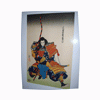
Translation confirmation and seeking kanji research link
edzo replied to edzo's topic in Translation Assistance
Dear Mr. Bowen, Thank you for the support and help. I'm moving toward the Hirokawa school for obvious reasons though i realize this blade may not be the Sandai. I recall while researching Shodai Edo Yasutsugu blade reading some information about the group some time ago from around the kanbun period <. I will revisit the group and see what turns up. Thanks again very much, Respectfully Ed F. -
Greetings members, I think I'm good on the translation but would like a confirmation of "Izumi (no) Kami Fujiwara Kunihiro". I have attempted a preliminary search to confirm a smith and the signature but it seems there is not much available at least where i have ventured so far. (Horikawa?) Any input would be appreciated. Thank you in advance for your assistance or opinions if you are so inclined. Respectfully, Ed F.
-
Dear Veli, Thank you very much for sharing that and visiting my post. I am anxious to look at it, Thanks again Ed F.
-
-
Thank you Mr. Bowen, I visualized the wara character behind the mekugi-ana and a small portion of the two strokes that I would expect from wara are present at 5:00-6:00 of the ana. Thank you again Ed F.
-
Greetings members I'm seeking a confirmation of my translation. I have come up with "Kashu (Kaga) ju Fuji (Shima or wara??) Kiyomitsu Saku" on this tang. Any assistance so that i may pursue my research is welcome, thank you in advance, Ed F.
-
Dear Mr Bowen, Thank you again for your generous participation. I would hope i can be as helpful to you in some way, Respectfully Ed F.
-
Dear Jean, Mr. Bowen and Jacques, Thank you very much for your generous and informative postings. I'm sure that this will be a great start and lead moving forward with my study. Though, I a little intimidated, my effort will be tenacious as soon as I unpack the blade. Thank you all very much, I will post my conclusion and the blade in Nihonto forum when I'm confident. Ed F.


